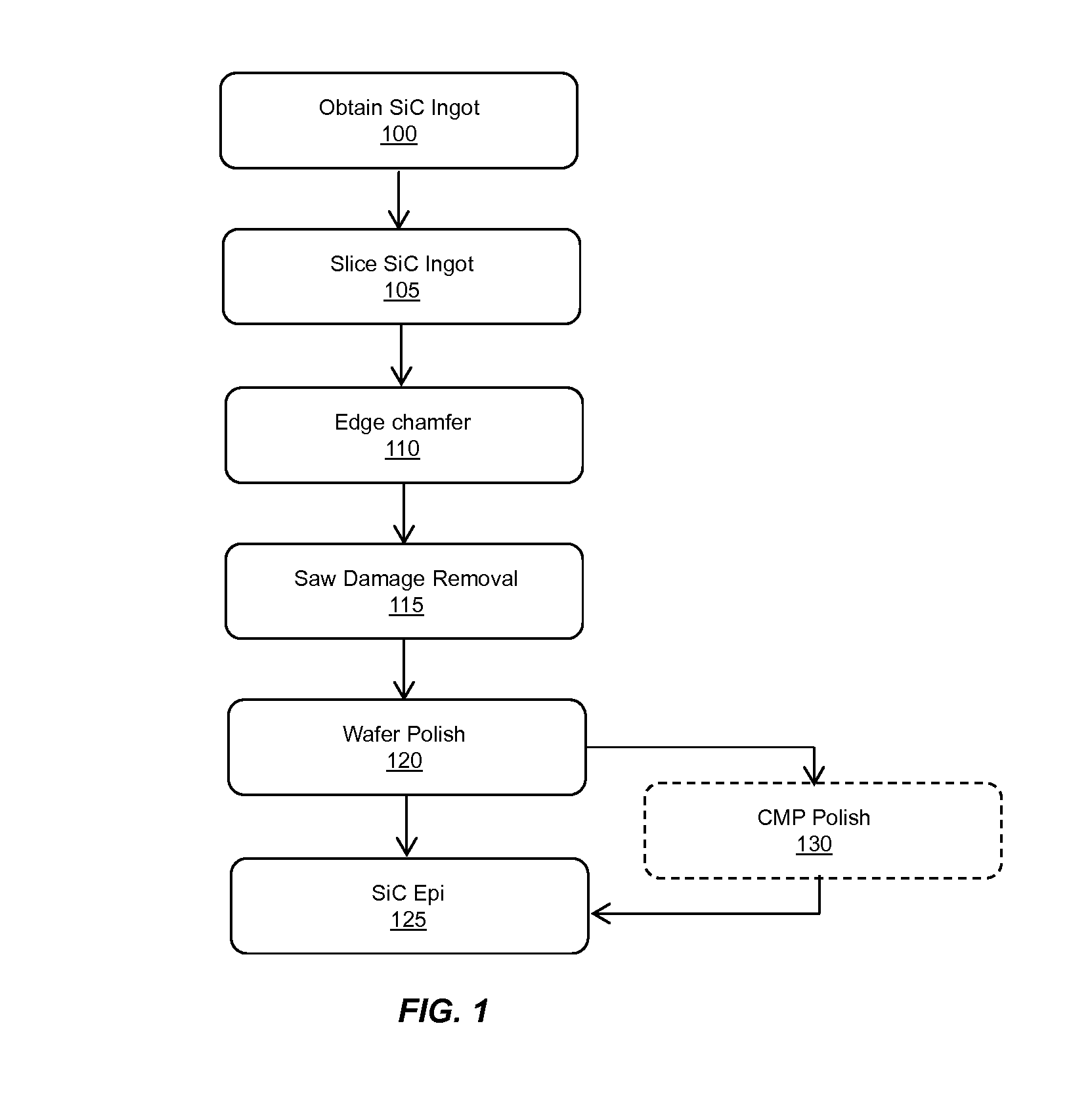Flat sic semiconductor substrate
a technology of silicon carbide and semiconductor substrate, which is applied in the direction of manufacturing tools, polycrystalline material growth, after-treatment details, etc., to achieve good global and local flatness and thickness performan
- Summary
- Abstract
- Description
- Claims
- Application Information
AI Technical Summary
Benefits of technology
Problems solved by technology
Method used
Image
Examples
example 1
[0072]The process flow disclosed above and illustrated in FIG. 1, was employed to fabricated 4H—SiC wafers of 75 mm and 100 mm diameters. The wafers exhibited resistivity range of 0.015-0.028 ohm cm. For steps 100-105-110, SiC ingots were machined into right cylinders. The cylindrical ingots were mounted on a plastic beam and placed into a multiwire saw. The ingots were cut using wire and a flow of diamond slurry directed onto the periphery of the ingot. The beam was removed from the saw and based into a bath to separate the slices from the beam. The slices were rinsed and placed into a cassette. The wafers were transferred to an automated edge grinding system where a trapezoidal edge profile was formed using a diamond wheel. The process follows the guidelines of SEMI Standard M55.
[0073]For step 115, saw damage removal was conducted using lapping or grinding, as indicated. Lapping was performed simultaneously on both wafer sides using lapping machine with diameter >40 inches. Wafers...
PUM
| Property | Measurement | Unit |
|---|---|---|
| thickness | aaaaa | aaaaa |
| thickness | aaaaa | aaaaa |
| total thickness variation | aaaaa | aaaaa |
Abstract
Description
Claims
Application Information
 Login to View More
Login to View More - R&D
- Intellectual Property
- Life Sciences
- Materials
- Tech Scout
- Unparalleled Data Quality
- Higher Quality Content
- 60% Fewer Hallucinations
Browse by: Latest US Patents, China's latest patents, Technical Efficacy Thesaurus, Application Domain, Technology Topic, Popular Technical Reports.
© 2025 PatSnap. All rights reserved.Legal|Privacy policy|Modern Slavery Act Transparency Statement|Sitemap|About US| Contact US: help@patsnap.com


